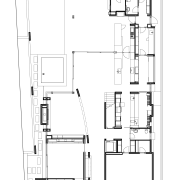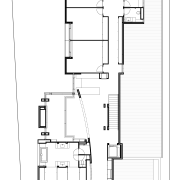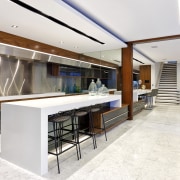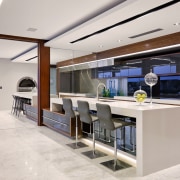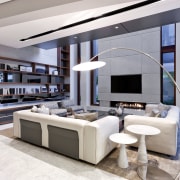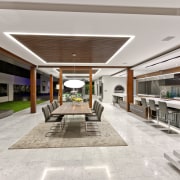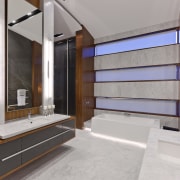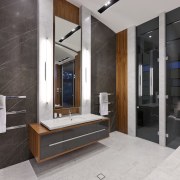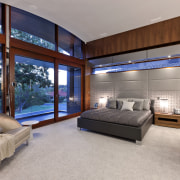Secret garden
The lines between spacious interiors and an internal landscape and pool are blurred in this contemporary home
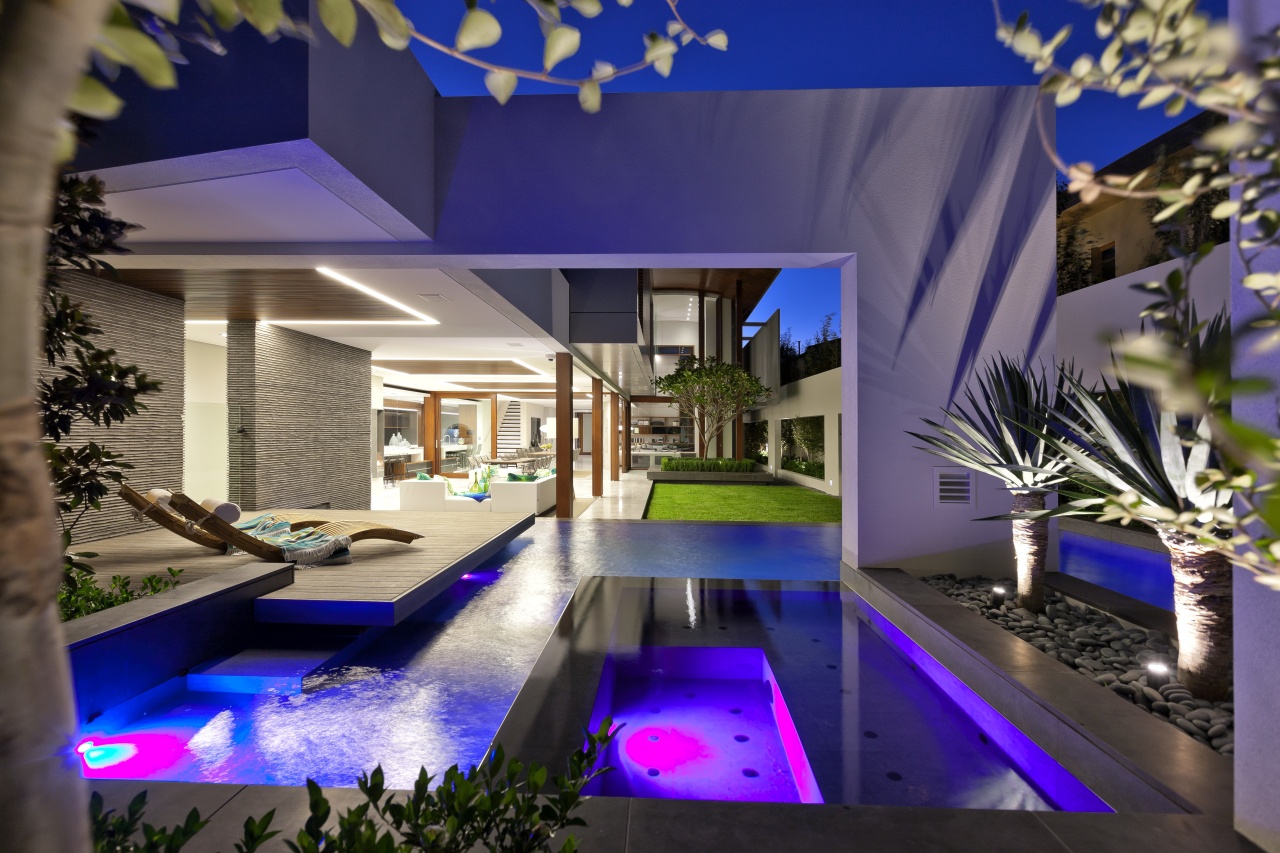
In architecture, a negative can be turned to a positive at a stroke what starts as a need to screen out a neighbour may end in a winning addition to the residence.
The profile of this long, linear two-storey home was influenced by its neighbours on both sides. Architect Mark Rietveld was asked to design the house on a strip of land running east to west. To avoid blocking sun for the southern neighbour, the house is lower on that side, with a curved roof rising to open the residence to its northern aspect the other way, says Rietveld.
"However, on this sunny side of the home, there's another two-storey house nearby. With close neighbours on both sides, we opted to create our own internal landscape for the house.
"To achieve this, an indoor-outdoor room runs almost the length of the residence on the northern side this looks out to a lush garden environment with pool and spa," says Rietveld. "We defined the outdoor setting with a brick portico frame that encourages the entire area to be read as an open-air room, an extension of the indoor environment.
"This portico also functions to screen the next-door neighbour from view."
Rietveld says long sightlines were made possible by creating two small garages at either end of the property, rather than one large one.
In terms of the layout, an entryway leads to a double-height living space. This in turn flows into the entertainment area that includes indoor and outdoor kitchens, living and dining areas. Behind the kitchens is a run of rooms right down the other side of the home. At the front, a guest bedroom and upstairs master suite and parents nook all look out to a mature oak tree. A family room, further bedrooms and a shared bathroom complete the upper level.
"One of the most appealing aspects of the house is the way it blurs its lines of functionality. Large stacker doors open the indoors to the alfresco area and garden, making it hard to see where one space ends and another begins.
"Several elements further this illusion. Four ceiling bays and pale Carrara flooring continue from inside to out, and the indoor and outdoor kitchens are separated by a transparent glass partition," says the architect.
Invisible dividing lines feature in other ways too. To avoid the need for pool fencing, Rietveld created a moat-like safety feature with an infinity edge. The only way to access the pool and spa is through a discreet glass door at the far end of the entertainment space. Similarly, a wine cellar that is on show to the living areas is behind a glass screen, with access via the larder.
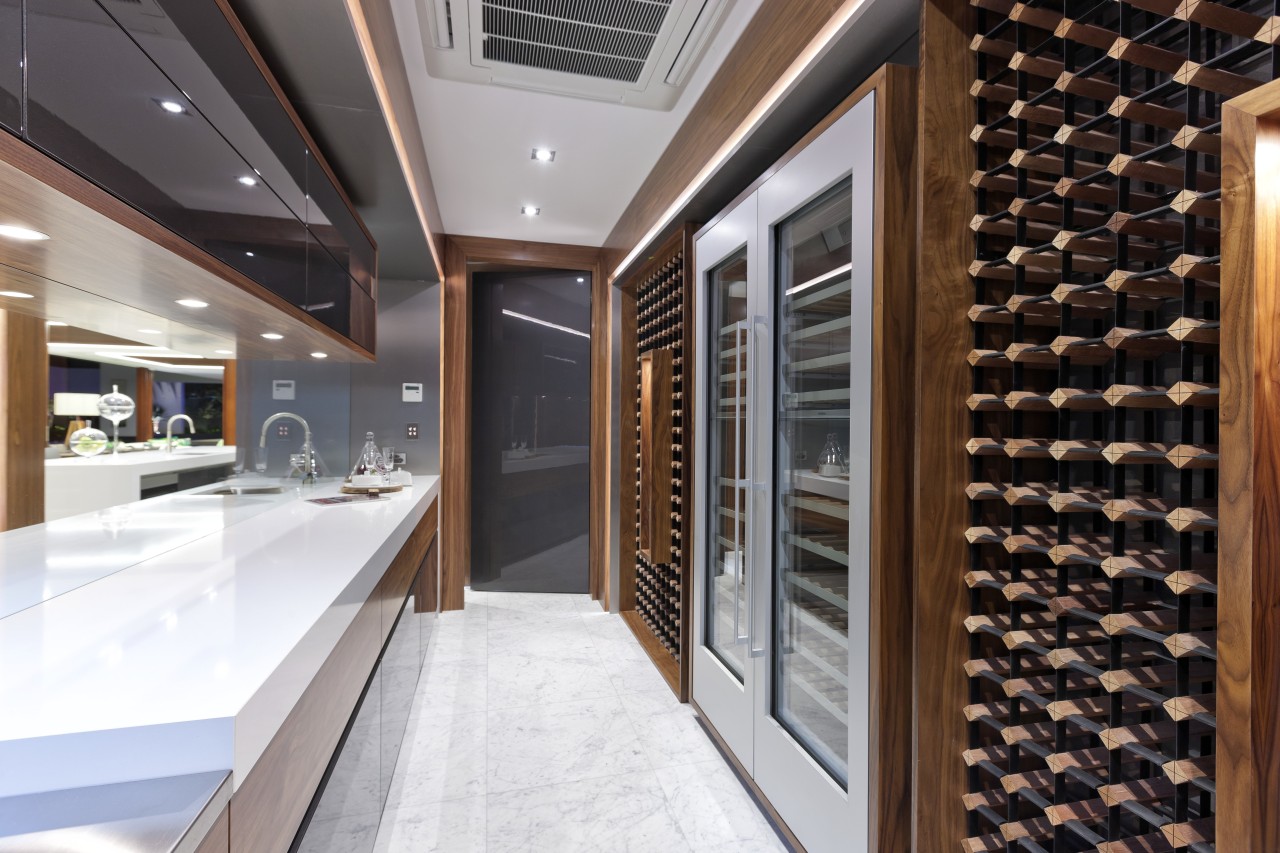
The entire ground floor area is designed to create a sense of spaciousness and openness. And this ambience continues in the master suite, where the airy bedroom connects to the master bathroom by a walk-through wardrobe.
The material palette emphasises natural finishes, from the Balinese stone facade, built up by hand over six months, pebble by pebble, to the generous use of wood and glass throughout.
"This house also has a strong emphasis on sustainability," says Rietveld. "Solar panels provide pool heating, while photovoltaic cells help power the home. Efficient hydroponic in-floor heating, grey water recycling and rain water recycling are other examples of a green agenda.
"The house also includes a sophisticated automatic control system that ensures all aspects of heating and cooling from solar penetration and blind angles to air conditioning all work in concert to achieve maximum energy savings for the homeowners."
Story by: Trendsideas
Home kitchen bathroom commercial design
Home Trends Vol. 30/4
New Home Trends features top locations from New Zealand and the rest of the world. New Home Trends is dedicated to provi...
Read More
